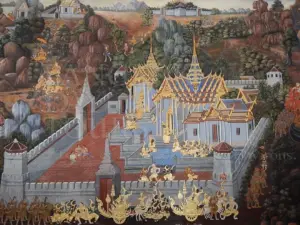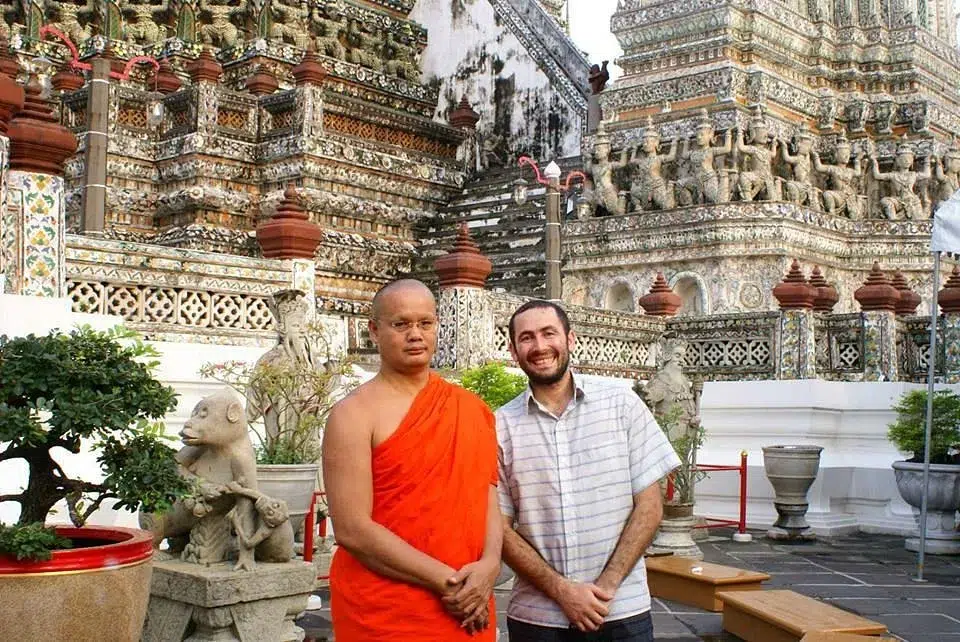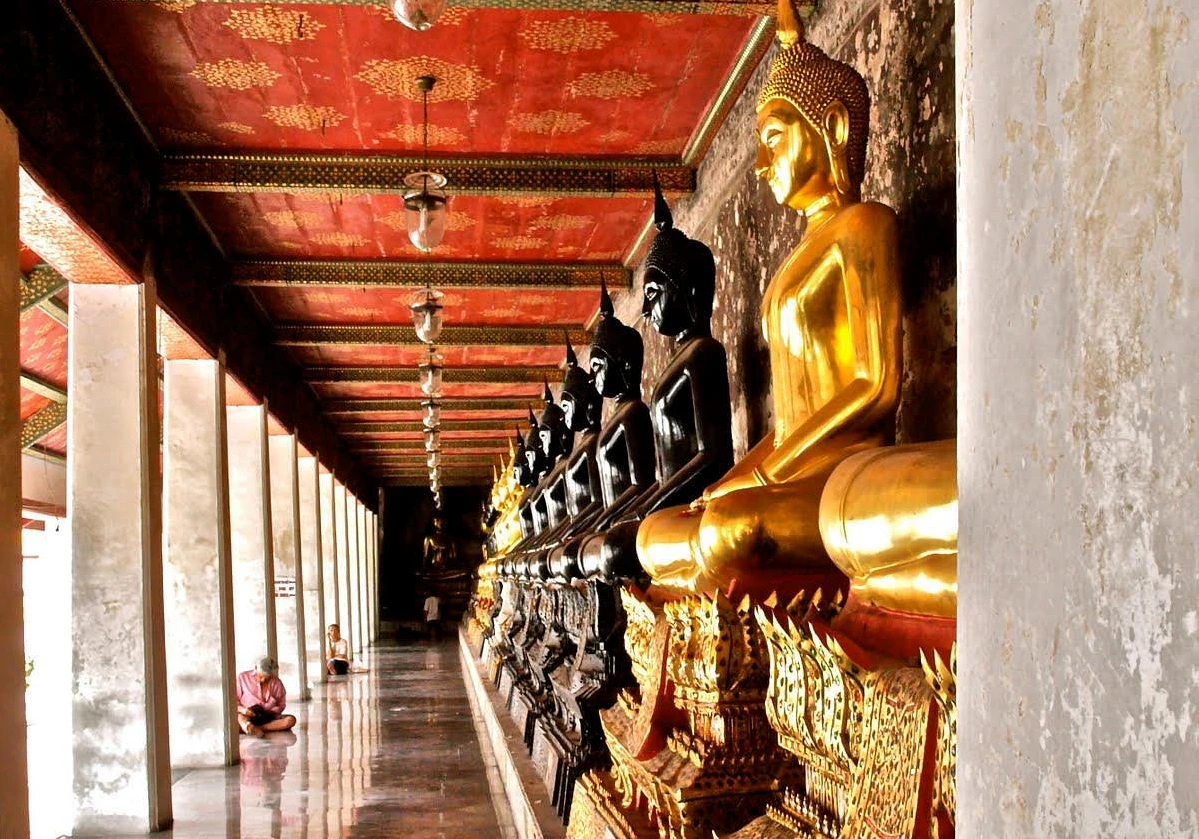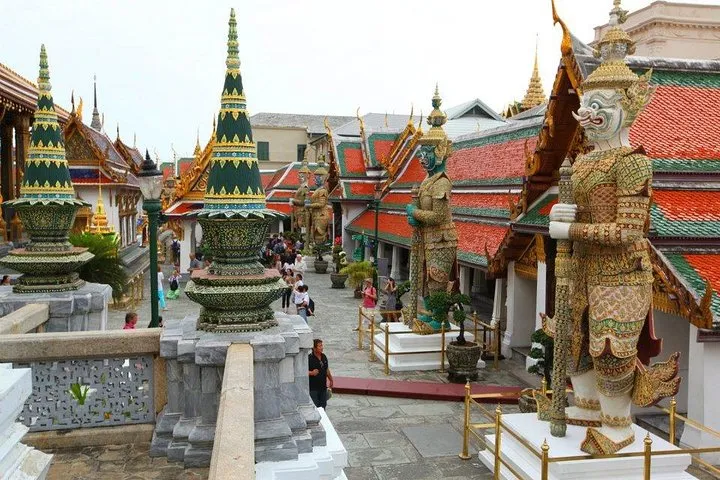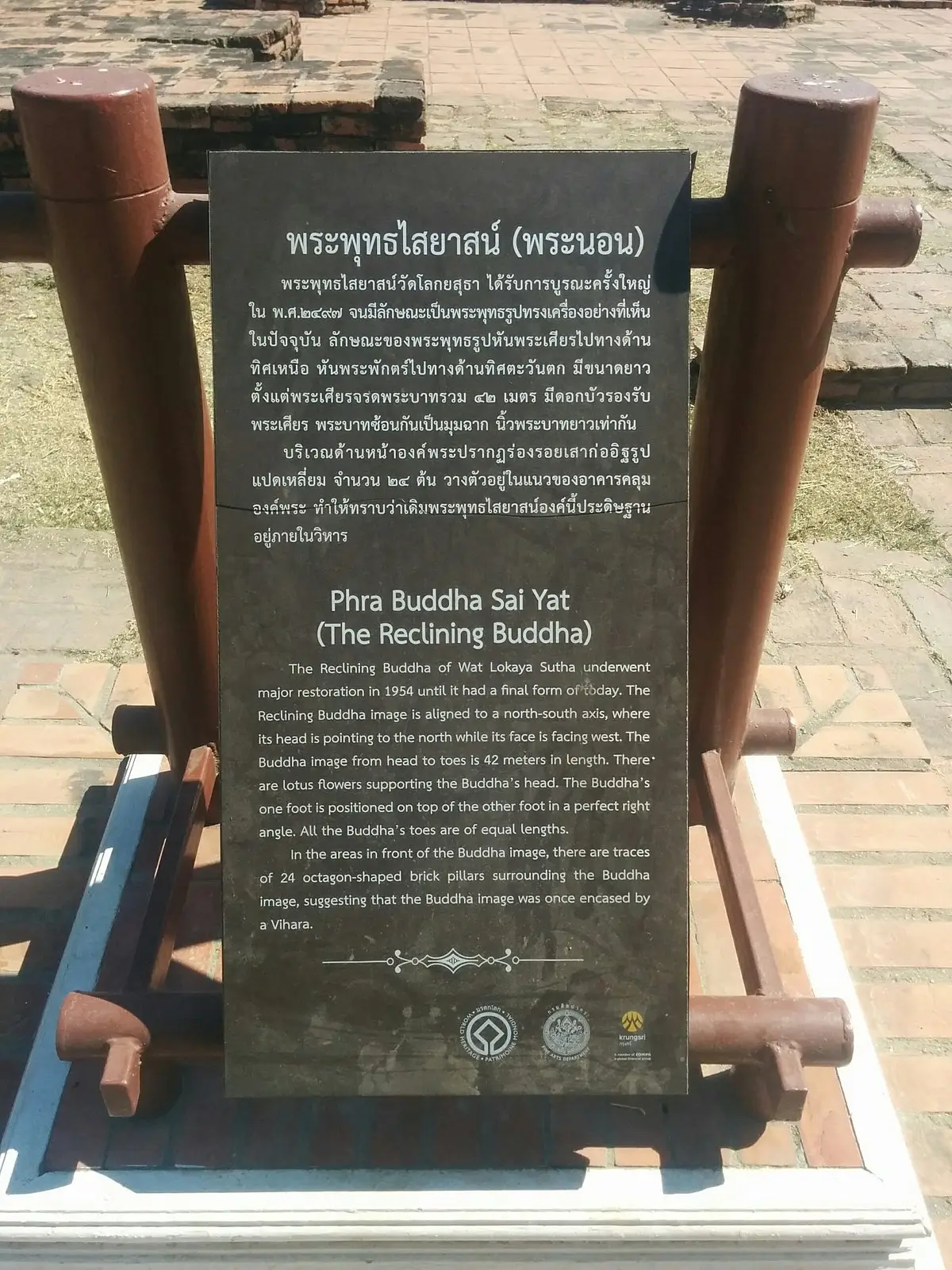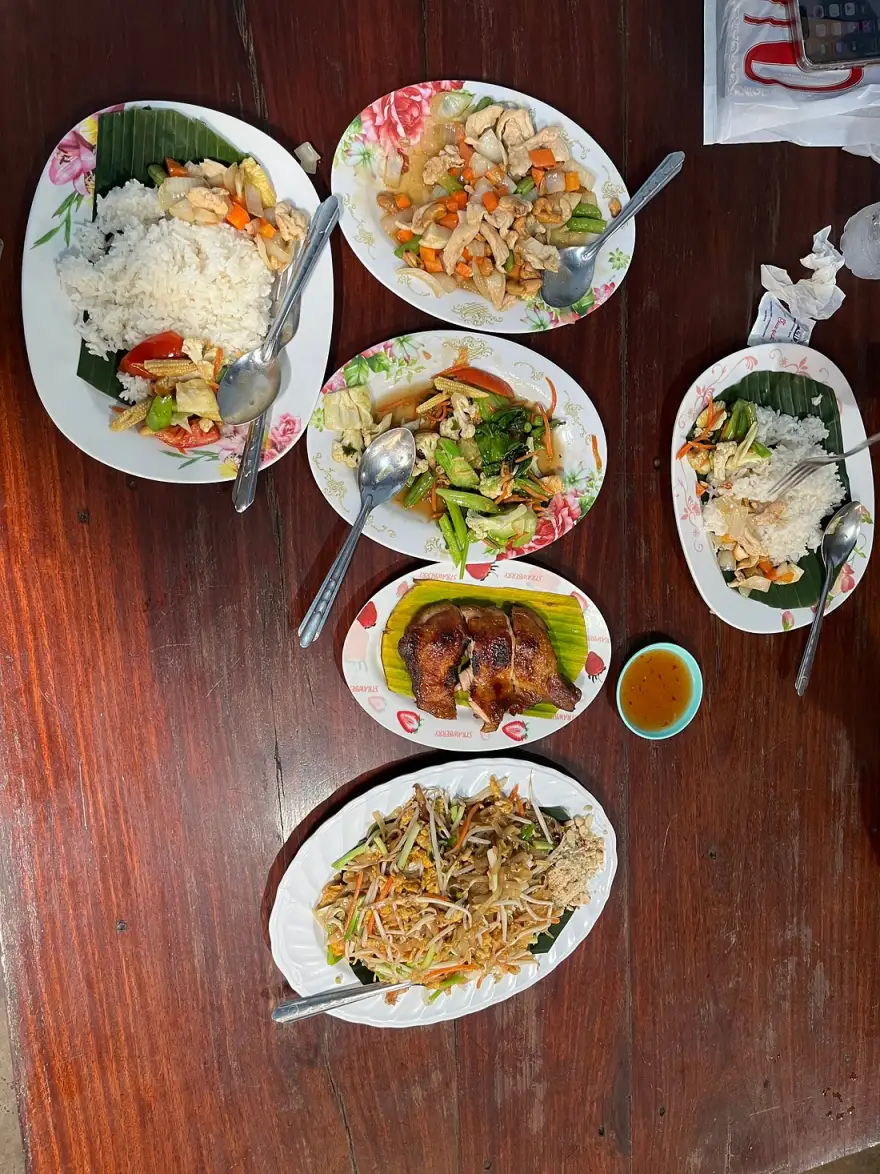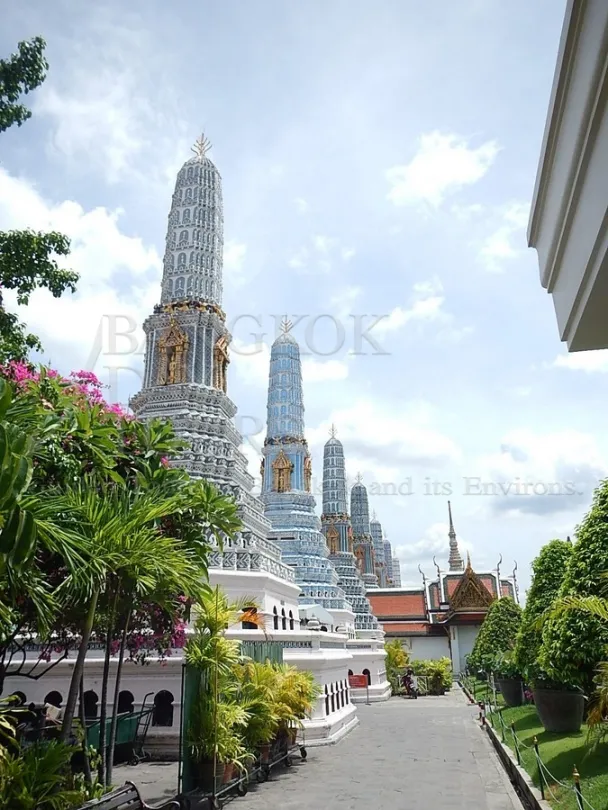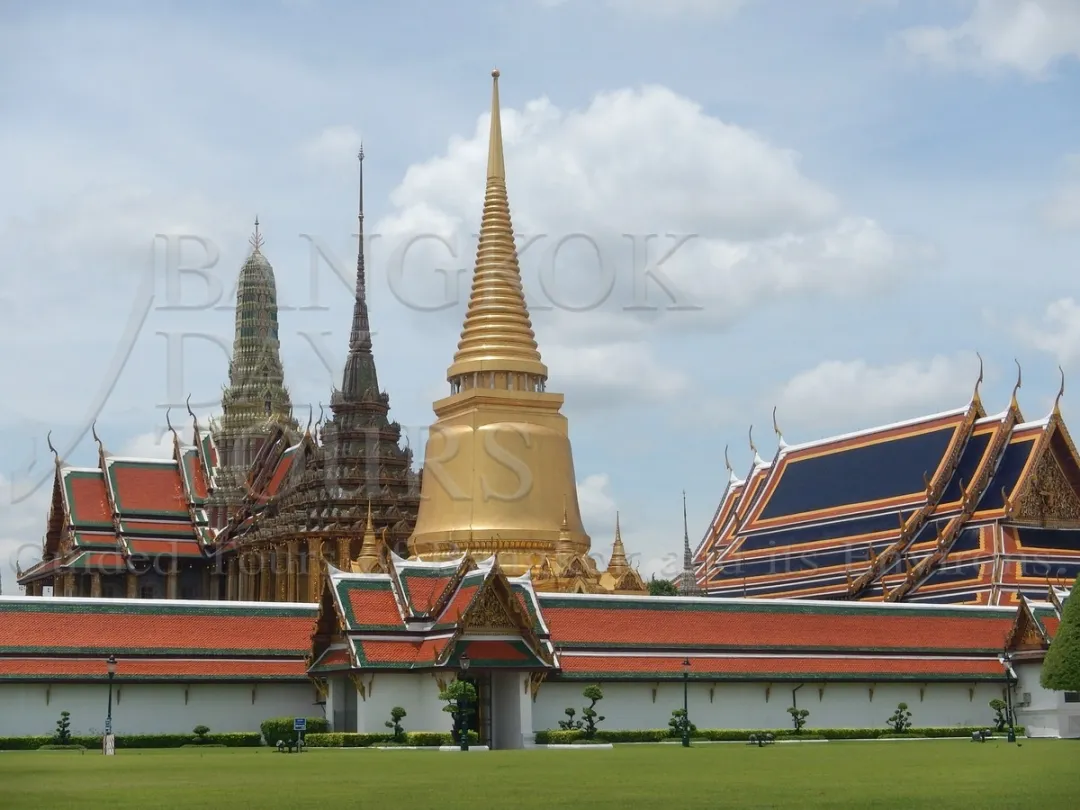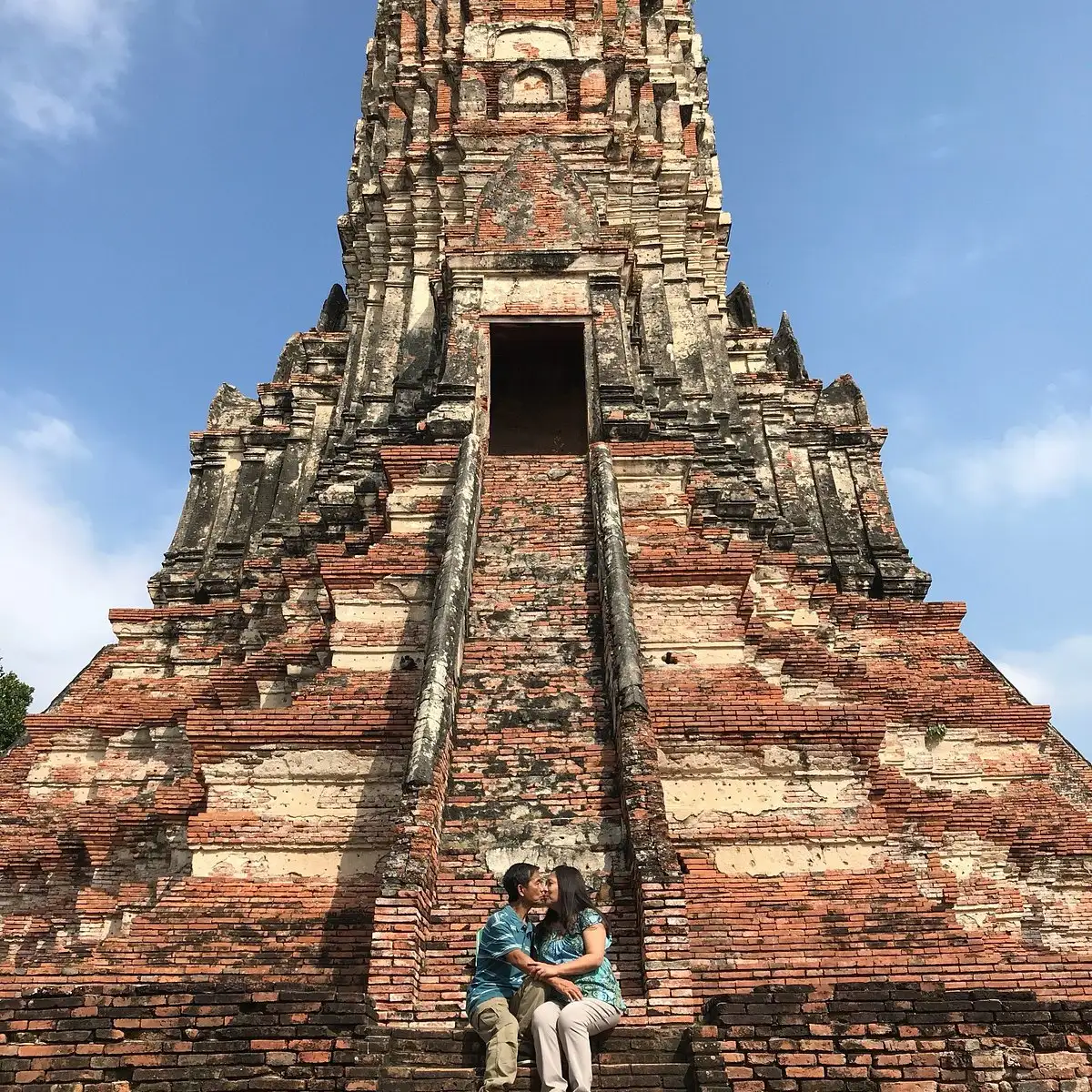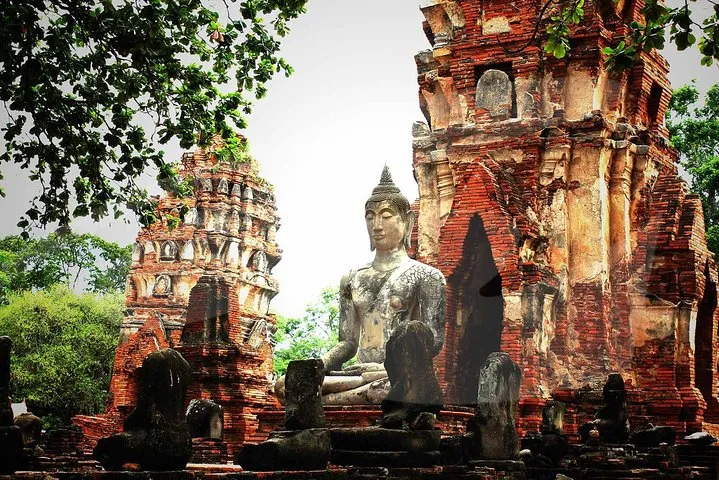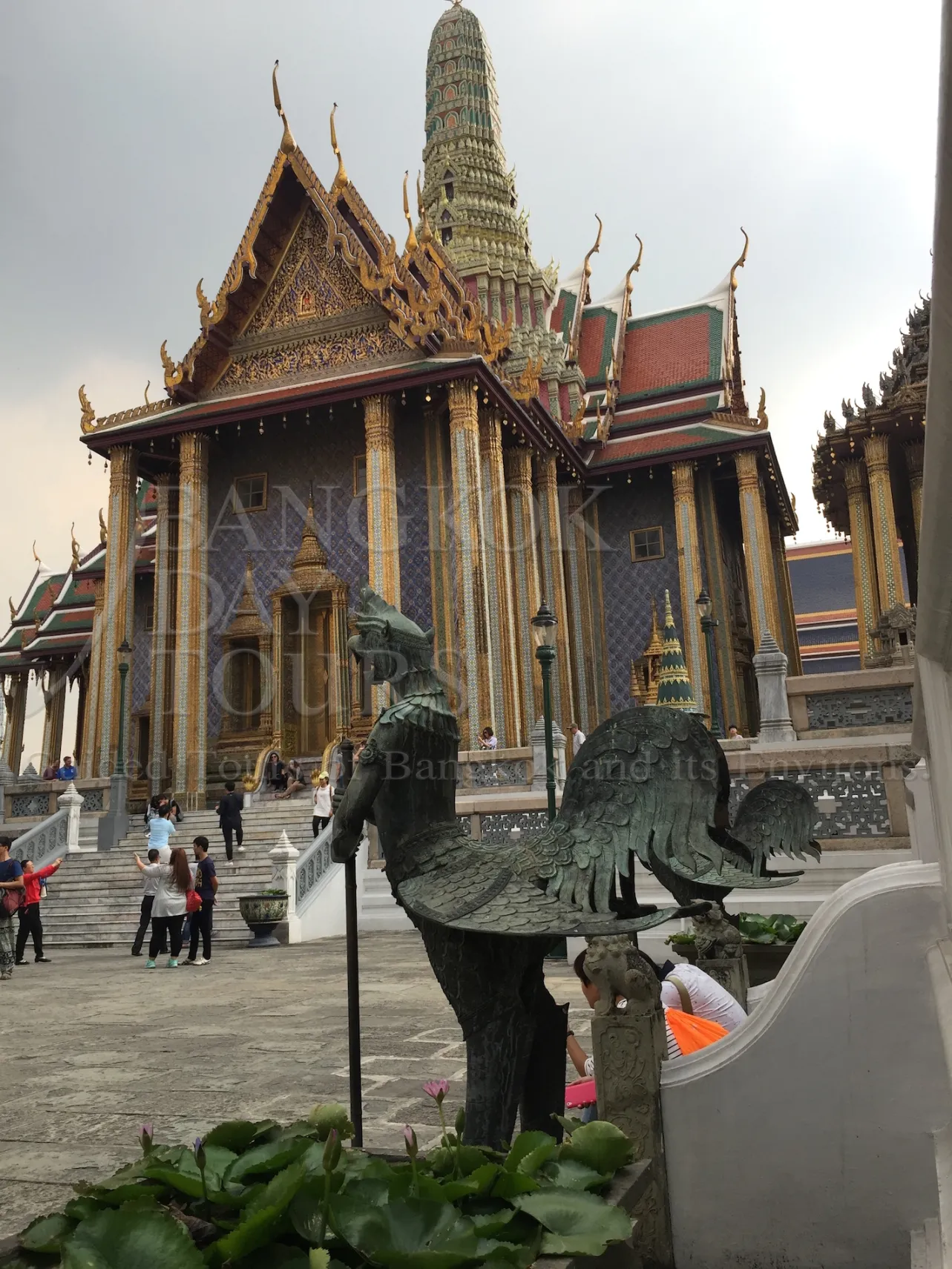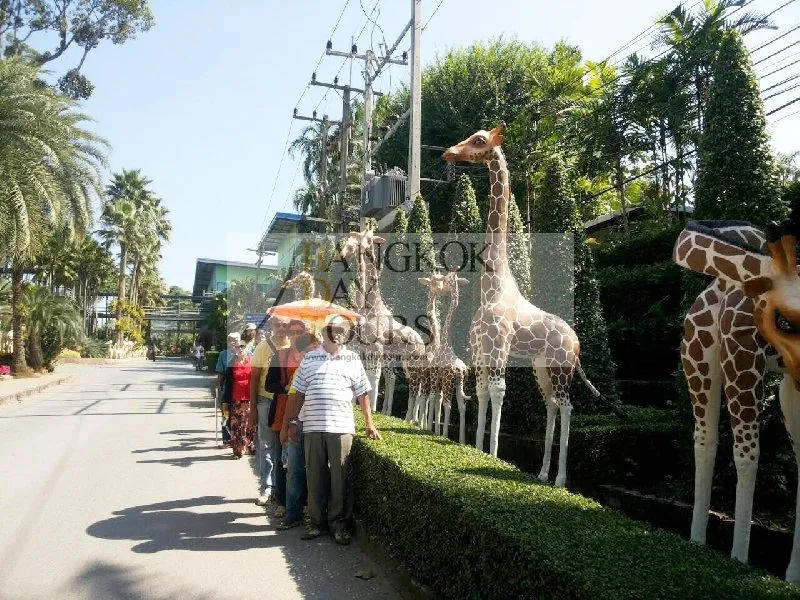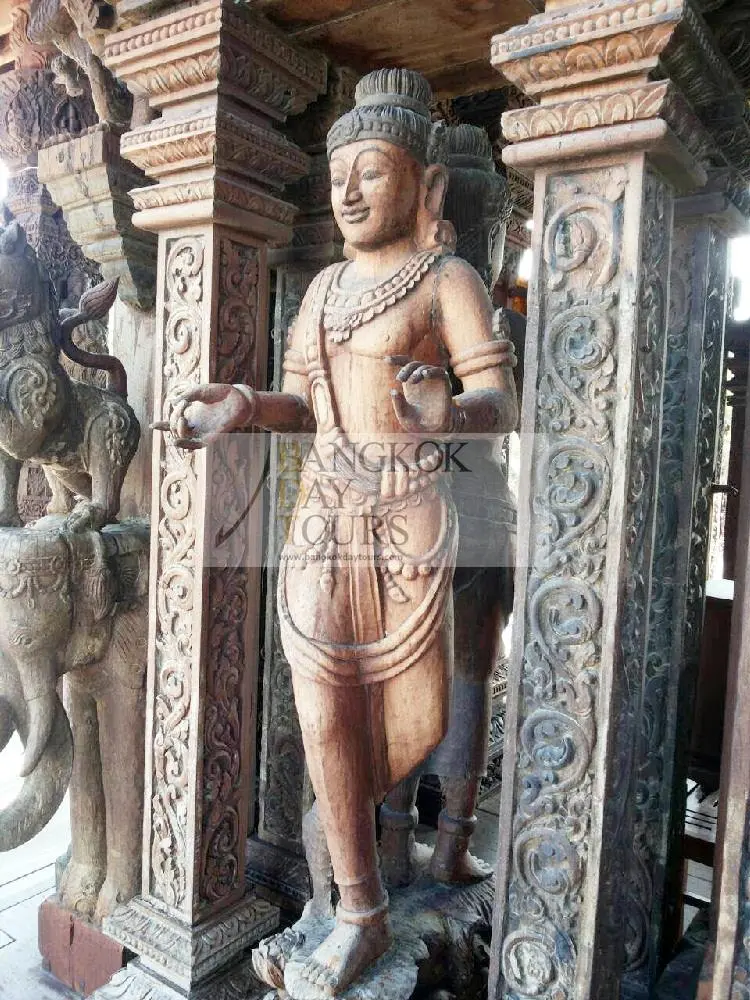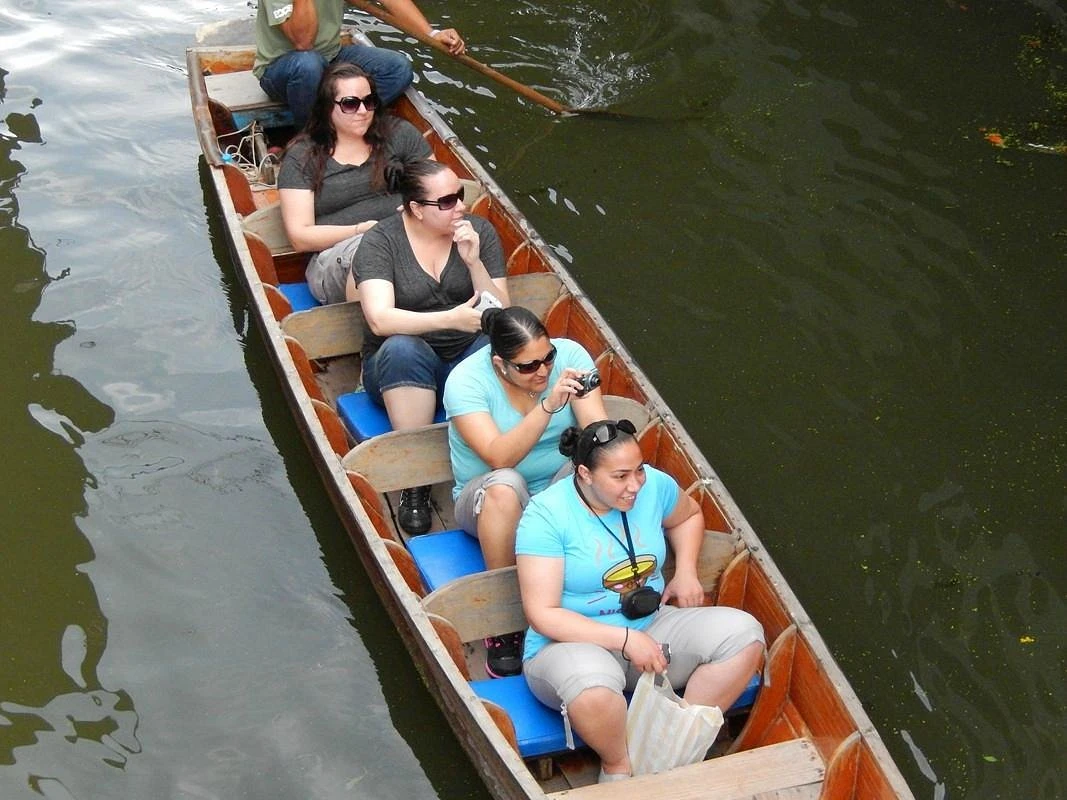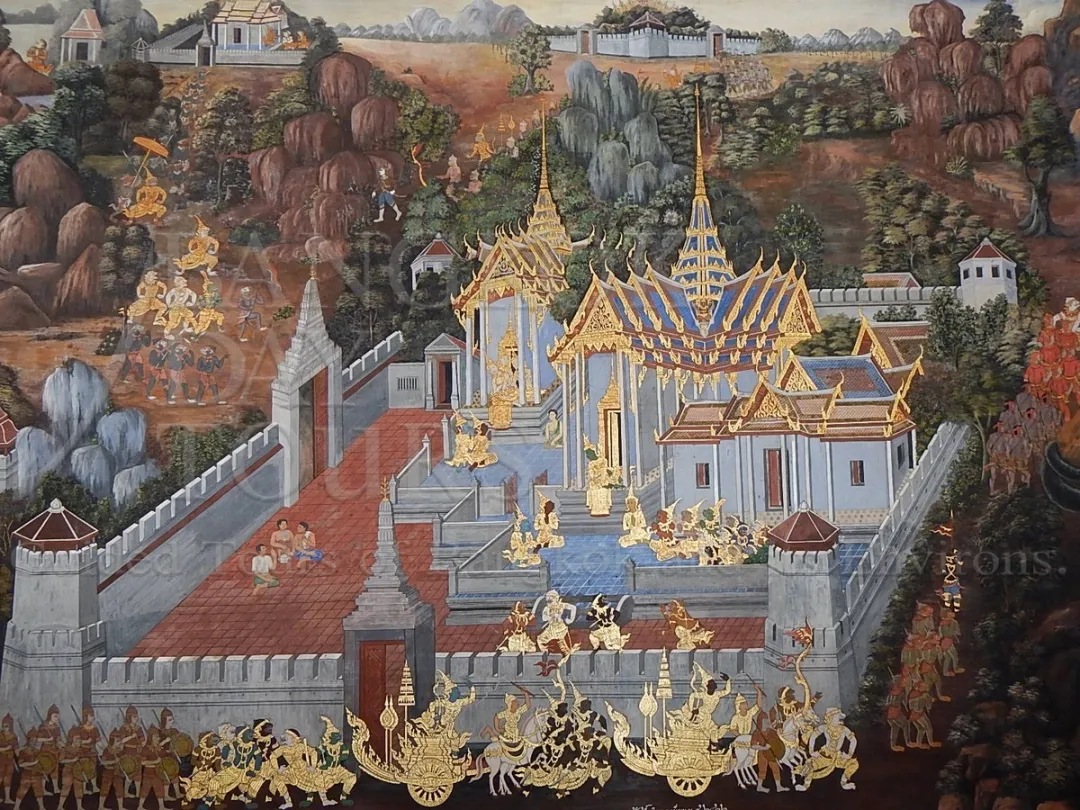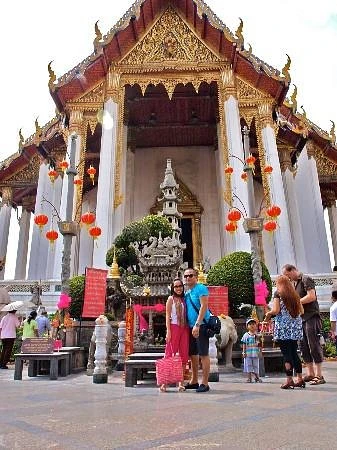Private Tour: Best Popular Bangkok City in A Day (1005)
Pick a day and people
THB 11,500.00
THB 11,500.00
THB 13,000.00
THB 17,500.00
THB 21,900.00
THB 22,500.00
THB 26,000.00
THB 29,900.00
THB 33,600.00
THB 43,800.00
THB 44,400.00
THB 45,000.00
This tour is not designed for cruise ship passengers. Exclusive cruise ship tours are available from Klong Toey Port and Laem Chabang Port.
A private, full-day tour of Bangkok is full of beautiful temples. The Emerald Budda & Grand Palace, learn about the country’s royal heritage as you explore the palace. Circle the reclining Buddha at Wat Pho Wat Pho [Reclining Budda temple], Wat Arun [Temple of Drawn], Wat Suthat and Giant Swing, Wat Traimit, Khon Performance or Thai Masked dance, Jim Thomson; as well as other city sights such as markets and ethnic minority neighborhoods; Amulet market, Flower market, Talad Noi, Chinatown, long tail boat to Taling chan floating market on Weekend ONLY! Or take a long-tailed boat on ChaoPhraya river, along the cannel to see Thai House and Buddhism temple.
Do you want your tailor-made tour?
A tailor-made tour is the best kind of independent travel itinerary, designed and arranged just for you and your needs.
All events and activities are part of your very personal, privately guided tour.
Just ask us and we will be happy to make your tour an unforgettable experience. We have been doing this for 25 years and the quality of tailor made tours has never changed.
Why is a private tour a better choice?
With a private tour, you have the freedom to choose what you want to do and when you want to do it. There is much more room for flexibility and changes to your itinerary at every step of the way because you don't have to consider the needs of other travelers. The flexibility and freedom to make the most of your time is the reason why so many people choose to take a private tour rather than a group tour.Private Tours vs Join Tours:
Bangkok Day Tours does not run join tours. All our tours are private tours, meaning that the vehicle is for the exclusive use of your group throughout the duration of your tour. This allows you to set your own pace and to move along when you have seen enough. No waiting for the stragglers! The only exception to the ANZAC Day Tours which are run on a join basis in April each year.Tour Programme
08:00 - Day 1 Departs
Our guide will meet you at 08:00 AM in your hotel lobby. Please advise your hotel name!
08:30 - Wat Traimit (Temple of the Golden Buddha)
Visit the temple famous for its Sukhothai era Buddha image made of solid gold, three meters high and weighing five and a half tons. 30 minutes • Admission Ticket Included
09:00 - Chinatown - Bangkok
Take a little walk and explore the Chinese community in Bangkok 30 minutes • Admission Ticket Free
09:30 - Pak Khlong Talat (Flower Market)
Pak Khlong Talat is a popular place for people of all genders and ages. it's a biggest wholesale Flower Market and a place where many types of flowers, This spacious, bustling market offers a vast array of flowers, fruits & vegetables. 30 minutes • Admission Ticket Free
10:00 - Wat Pho (Wat Phra Chetuphon)
Wat Pho, the official name being Wat Phra Chetuphon Wimon Mangkhalaram Rajwaramahawihan, is the first grade royal monastery. It's very impressive huge reclining Buddha image in bronze built in Ayuthaya period (1350-1767). 1 hour • Admission Ticket Included
11:00 - The Grand Palace
The Grand Palace is a complex of buildings at the heart of Bangkok, Thailand. That was consecrated in 1782. Today, it’s only used on ceremonial occasions, but it remains the city's biggest tourist attraction and a pilgrimage destination for devout Buddhists. 1 hour • Admission Ticket Included
12:00 - Wat Phra Kaew (Temple of the Emerald Buddha)
The Temple of the Emerald Buddha), the 94.5-hectare grounds encompass more than 100 buildings that represent 200 years of royal history and architectural experimentation. 1 hour • Admission Ticket Included
13:00 - Bangkok Canal
Explore the canals of Bangkok on the Chao Phraya Rivera in a traditional Longtail tail Boat and enjoy a glimpse of local life in the Thonburi district of Bangkok and small canals of the Chao Phraya River, which once gave the name “ Venice of the East” to Bangkok. 1 hour • Admission Ticket Included
14:00 - Wat Arun (Temple Of Dawn)
Wat Arun also known as the Temple of Dawn, is one of Bangkok's most iconic Buddhist temples. Situated on the western bank of the Chao Phraya River, which features a soaring 70-meter-high spire decorated with tiny pieces of colored glass and Chinese porcelain. Embark the boat and take a SKY TRAIN back to the hotel. 1 hour • Admission Ticket Included
A strict dress code applies at The Grand Palace and The Temple of the Emerald Buddha which are Thailand’s most sacred site. Visitors must be properly dressed before being allowed entry to the temple. Men must wear long pants and shirts with sleeves. No tank tops or singlets. Women must be similarly modestly dressed. No see-through clothes or bare shoulders. No shorts or tights. Proper shoes must be worn. No flip flops.







